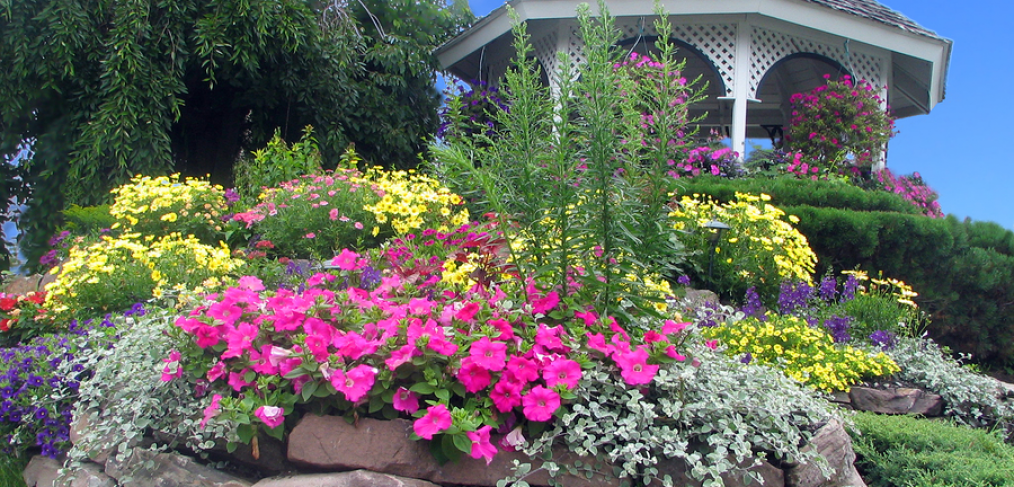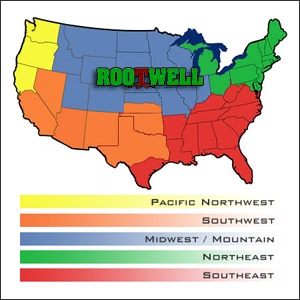
Plant Hardiness Zones: Top Tips for Home Gardeners

You may see references to plant hardiness zones everywhere as a gardener. Planting zones are mentioned on blogs like this one, written on seed packages and plant tags from nurseries, and even on weather stations.
We all think we know what it means. Simply find your area of the country on the key and coordinate with where the tag says to plant, right?
Well, that’s not wrong, but it’s not the full picture of what planting zones are meant to convey. It also doesn’t take into account weather patterns that can be very different within the same plant hardiness zones.
What are Plant Hardiness Zones?

The system was actually designed for the agricultural industry as a way to have a common language among companies about which plants did best in which areas, based on the climate of the region. Farmers, professional landscapers, and home gardeners all use this map.
What it did was make it possible to determine which non-native plants would grow like native plants in other locations based on similar environments and which will only survive as annuals in climates which are too cold.
However, plant hardiness zones aren’t divided by region the way most people assume. We assume this because some states share similar climates in our minds, but this simply isn’t the case.
What the USDA has actually done is collect data from news stations around the country and determine zones based on the average minimum temperature of that region. Therefore, 1A – which is the coldest zone averages a minimum of -60 degrees (that’s negative sixty degrees) Fahrenheit and 13B is the warmest zone, averaging 70-degrees Fahrenheit.
The coldest zones don’t mean there is no growing season. It is an average. However, many regions in the coldest zone do have a shorter growing season. Zones around the 70 degree average are all very well able to grow things year-round.
The Impact of Plant Hardiness Zones
One type of planting this impacts most is with perennial plants, and this is the reason some plants are thought of as “annuals” in Michigan which are perfectly able to live year-round in a southern climate.
Anything you desire to come back year after year will have to be able to survive low temperatures of -15 degrees Fahrenheit in many parts of the state. However, there are many plants which are considered perennials in Southern climates which grow happily between frost dates in my hardiness zone (6b for anyone who is interested).
Most hardiness zone tools are available online and will give you all that information: temperature ranges, frost dates, even the type of ecological system in which you live. Usually, you can find your area on the map and match the color to the key on the side, or you can enter your zip code and be given your hardiness zone number.
How to Use Plant Hardiness Zones to Your Advantage
If you have gardened before, you know how much effort it takes to start your seeds indoors and nurse them through early spring, hoping the frost dates are reliable and you are able to get your plants outdoors into the sun before they get too big.
In addition, you know how expensive it is to buy plants started from seeds in a nursery. Either way, it is a significant investment in time and resources to maintain plants. Just because it’s also a personal joy and a privilege to take care of a garden doesn’t mean it can’t also be hard and risky, sometimes.
Plant hardiness zones can give you an advantage in that you know your window for planting new things or revamping what you have already. To a gardener, it can seem like precious little time.
There are a few good, practical solutions to dealing with your particular planting zone. Some of which are good for any climate and some of which have more to do with shorter growing seasons. If you live in the south, you have the advantage over much of the rest of the country.
Tips on Using Plant Hardiness Zones
Use a Planting Schedule
Use a planting schedule based on your area. These tools are often available online for free. They help take the guesswork out of gardening in your particular area. You can also calculate your own schedule based on projected frost dates. These tools can help you to start your seeds indoors at the right time and whether there are any crops which can be planted a second time in one season.
Realize Plant Hardiness Zones Vary
First, realize that zones can vary in your region – even with your state or county. For example, there are three different zones in Michigan, and they are all mixed up all over the state. Other zones in the country are very broad and can spread from one coast all the way to the other. This means that weather is the variable factor. Some parts of that huge zone are very hot, some get good rainfall, and some are very dry. If you know which weather threats are common for your area, you can prepare your garden to deal with them.
Change What You Grow
You may have to give up on those lush southern plants if you live in a cooler climate. However, remember that some plants don’t work in some areas. It’s the same thing for some vegetable crops with a small growing season. For many types of flowers, there’s always the option of buying or growing annuals from seeds for one season.
Use a Greenhouse
One sure way to extend your growing season is by erecting a greenhouse if space and money allow. You can start seeds in relative comfort and, depending on how relatively warm your greenhouse is, grow some plants year round.
Use Above Ground Growing Methods
Above ground growing methods, along with frost protection, can also extend the time of your growing season, as it doesn’t depend as much on the ground being warm or soft enough.
Make Your Environment Ideal
No matter the hardiness zone, it is always recommended to build up your soil with plenty of organic matter, to test its pH, and to make sure your garden is planted where it will get at least 6 hours of sunshine. These things will go a long way toward your ideal garden.
Takeaway
In conclusion, understanding and using your USDA hardiness zone to your gardening advantage can be easy and beneficial. Happy gardening everyone!



